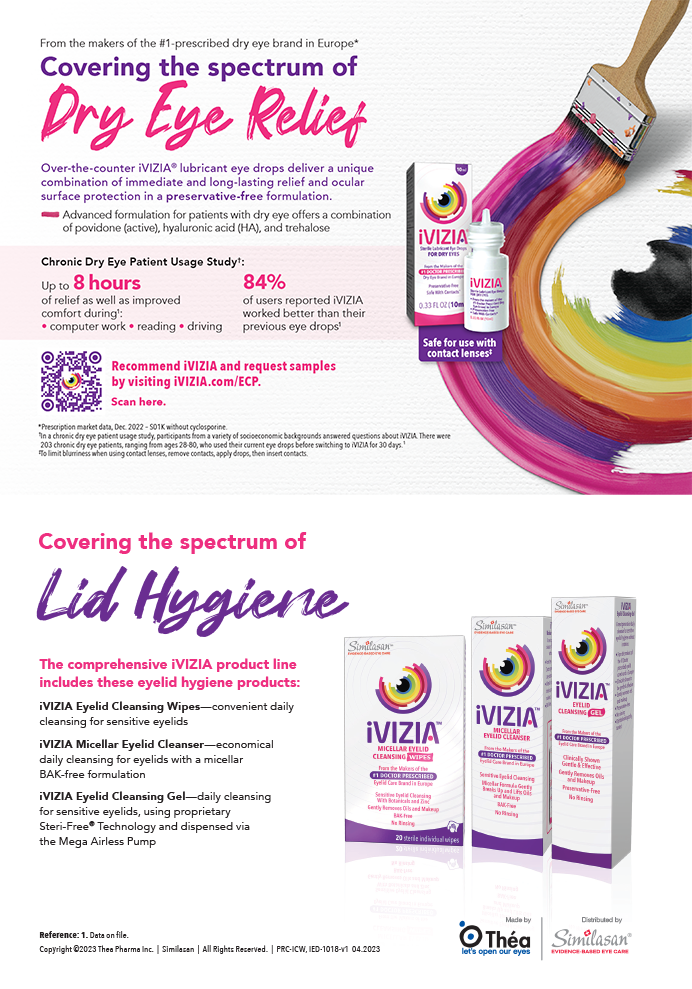DisCoVisc (Alcon Laboratories, Inc., Fort Worth, TX) has a zero shear viscosity similar to the cohesive Healon (Abbott Medical Optics Inc., Santa Ana, CA) but is dispersive in nature. The first described viscous dispersive ophthalmic viscosurgical device (OVD),1 DisCoVisc was developed to maximize the advantages of both cohesive and dispersive properties. Researchers have attempted to demonstrate this OVD's properties of retention and removal in comparison to those of other cohesive and dispersive OVDs.2,3 The purpose of our study was to experimentally evaluate DisCoVisc's retention in the anterior chamber during phacoemulsification with varying levels of vacuum and flow rates. Our secondary aim was to describe qualitatively the OVD's cohesive/dispersive properties during different phases of cataract surgery.
MATERIALS/METHODS
One surgeon performed phacoemulsification and IOL implantation on nine phakic human eyes obtained from eye banks. DisCoVisc was prestained using fluorescein strips to enhance visualization4 (Figure 1A) and used during all phases of the surgical procedure. The vacuum pressure and flow rate during phacoemulsification were adjusted between 300 to 400 mm Hg and 30 to 40 mL/min, respectively, in different combinations (one eye in each combination). Following phacoemulsification, we graded the amount of OVD retained in the anterior chamber (Figure 1B and C).
RESULTS
All of the surgical procedures were without complications. The retention of DisCoVisc was nearly complete at a vacuum pressure of 300 mm Hg, but the amount retained in the anterior chamber decreased uniformly as the pressure increased (Figure 2). The flow rate did not markedly affect the OVD's retention. One weakness of our study is that we did not use a control OVD as a comparison, but our results are consistent with those of previous investigations.2,3
DisCoVisc performed adequately during all phases of the surgery, including injection, maintenance of the anterior chamber/dome and capsular bag, and aspiration. Consistent with our primary findings, the surgeon found the OVD to be more cohesive than dispersive as the vacuum pressure increased from 300 to 400 mm Hg. Our grading systems were the same as used in the FDA clinical trial of DisCoVisc.
CONCLUSION
In our study, the surgical behavior of DisCoVisc changed with varying phaco settings. This OVD appears to maximize the benefits of both cohesive and dispersive properties with a vacuum pressure of 300 mm Hg. Our findings support that DisCoVisc can provide needed cohesive or dispersive properties according to the surgical phase and thus may satisfy the requirements for using a single OVD for the entire cataract surgical procedure.
The authors acknowledged no financial or proprietary interest in the products mentioned herein. The study was supported in part by a research grant from Alcon Laboratories, Inc., and portions were presented at the 2006 ASCRS Symposium on Cataract, IOL and Refractive Surgery.
Brian Haugen, MD, is an ophthalmic research fellow at the John A. Moran Eye Center, University of Utah, Salt Lake City.
Jonathan Haymore, MD, is an ophthalmic research fellow at the John A. Moran Eye Center, University of Utah, Salt Lake City.
Nick Mamalis, MD, is a professor and the director of the Intermountain Ocular Research Center, John A. Moran Eye Center, University of Utah, Salt Lake City.
Natalya Romaniv, MD, is an ophthalmic research fellow at the John A. Moran Eye Center, University of Utah, Salt Lake City.
Liliana Werner, MD, PhD, is an associate professor and the co-director of the Intermountain Ocular Research Center, John A. Moran Eye Center, University of Utah, Salt Lake City. Dr. Werner may be reached at liliana.werner@hsc.utah.edu.
- Arshinoff SA, Jafari M. New classification of ophthalmic viscosurgical devices–2005. J Cataract Refract Surg. 2005;31:2167-2171.
- Oshika T, Okamoto F, Kaji Y, et al. Retention and removal of a new viscous dispersive ophthalmic viscosurgical device during cataract surgery in animal eyes. Br J Ophthalmol. 2006;90:485-487.
- Petroll WM, Jafari M, Lane SS, et al. Quantitative assessment of ophthalmic viscosurgical device retention using in vivo confocal microscopy. J Cataract Refract Surg. 2005;31:2363-2368.
- Pandey SK, Werner L, Apple DJ, et al. Viscoanesthesia part III: evaluation of the removal time of viscoelastic/viscoanesthetic solutions from capsular bag of human eyes obtained postmortem. J Cataract Refract Surg. 2003;29:563-567.


